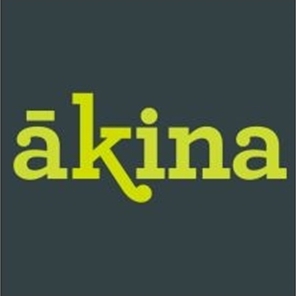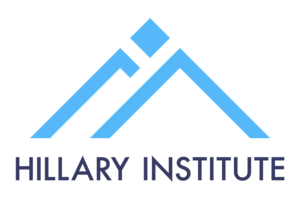It’s Mayhem In Markets As Downside Risks Dominate Following Trump’s Tariffs
- The world as we know is changing. Trump’s reciprocal tariffs announced last week were worse than feared. And the retaliation is beginning. Noses are being cut to spite (or save) faces. A global slowdown is inevitable.
- Following a trio of 50bps rate cuts, we expect the RBNZ to slow its pace of easing on Wednesday’s policy meeting. We expect a 25bp cut to bring the cash rate to 3.50%. But with the trade war unfolding, the case for a lower terminal rate is growing stronger.
- A hundred years of reducing tariffs, and globalisation, is now reversing. Trump’s “Liberation Day” tariffs will take the average rate of tariffs to the highest level since 1906, before the first world war. See our COTW for more
Here’s our take on current events
Well, that was quite the week. Trump’s long awaited “Liberation Day” has left markets in mayhem. The scope and scale of the so-called ‘reciprocal tariffs’ were worse than feared. The US has imposed the baseline 10% tariff on over 90 countries and territories (inhabited or otherwise). While a harsher treatment was issued to countries with which the US holds a larger trade deficit. Indeed, it should be noted that such “reciprocal rates” appear to have been calculated on the basis of a country’s trade balance with the US, as opposed to a true reciprocal rate.
Aotearoa has been lumped in with our Tasman cousin and the other 90 or so countries with a 10% tariff. While China and many of the emerging Asian economies have been hardest hit. Cambodia and Vietnam have copped the highest tariffs at 49% and 46%, respectively. While China’s average rate has lifted to almost 70%, if combining its 34% reciprocal tariff, the 20% tariff already in place as well as the existing tariffs pre-Trump.
Now the focus turns to retaliatory action. Some are already striking back, like Canada and China. And it’s getting serious. On Friday, China announced it will impose a 34% tariff on all US imports and tighten its export controls on its rare-earth minerals. The EU is also rumoured to be planning a response. Other (at least 50) countries are reportedly looking to negotiate a better reciprocal rate. Globalisation as we know it, hangs in the balance (see COTW).
The market reaction has been swift. Wholesale rates have moved decisively lower. Kiwi rates have gone from factoring in a terminal RBNZ cash rate of 3%, to pricing in a good chance of another two cuts to 2.5%. Given the balance of risks, it’s perfectly reasonable. While some commentators are warning of near term inflation and the need to hold rates higher, they’re missing the big picture. Tariffs hurt growth, global growth. And risks of recessions in our largest trading partners will force central bankers to cut (not hike). With this in mind, the pivotal 2-year swap rate, used by banks to price 2-year mortgage fixed rates, has dropped from 3.45% last week, to 3.10% this morning. Meanwhile, the Kiwi has fallen back below 56c. And we’re still finding our way. More countries will retaliate, and we could see further falls across interest rates and (risk) currencies.
Above all the noise, this week we’re looking to the RBNZ’s (MPR) decision on Wednesday. Rates traders are placing small bets on a 50bp move (25% chance). And why not? The risks to the downside dominate, and at 3.75% we’re far from a neutral setting, with possible need for a stimulatory setting. The mayhem in markets has seen traders pricing in a terminal rate of 2.65%, down from 3% last week. So another cut to 2.75% is fully priced, with a further 40% chance of a final cut to 2.5%. That’s a massive move.
A 25bp rate cut this week was “baked into the cake” so to speak, before Liberation day. The cake is still sour, not yet sweet. Monetary policy is still restrictive, far from stimulatory. We have recorded a deep, prolonged, and painful recession. Interest rates should be at a neutral setting, around 3%, at least. And a good argument, even sounder now off the back of escalating trade tensions, is being made for a slightly stimulatory position, around 2.5%. We are crawling out of this recession. Policy should be set to get the economy back on its feet and running in the right direction.
Our central scenario still sees the Kiwi economy gradually recovering over the second half of this year. More timely data are already showing promising signs of a turnaround in activity. From PMIs popping into positive territory to healthy export earnings for the rural sector, greenshoots are emerging. However, more than ever, we’re seeing the risks as clearly skewed to the downside for the economy.
Like its peers, we expect the RBNZ to acknowledge these global risks. The beginnings of our economic recovery – as fragile as it is – has largely been driven by the external sector. A disruption to global trade does not bode well for the Kiwi ‘small, open’ economy. An escalation of the tariff trade war, should more countries retaliate, could stall our expected economic recovery. And such a scenario would require the RBNZ to push the cash rate below 3%.
Charts of the Week: Job growth flattening at cycle lows.
Our chart of the week plots the average tariff rate on US imports all the way back to the 1800s. Trump’s “Liberation Day” tariffs will take the average rate to the highest level since 1906, before the first world war. A hundred years of reducing tariffs, and globalisation, is now reversing. Our second chart plots the rapid globalisation post world war II. But globalisation became slowbalisation with risk of deglobalisation after the 2008 global financial crisis. Trade wars will only make this ‘trend’ worse.
Between escalating geopolitical tensions and growing risk of geoeconomic fragmentation, the global outlook is shrouded in uncertainty. Trump’s “Liberation Day” has left us contemplating how much all these tariffs will weigh on global growth. And it’s still hard to quantify, but negative nonetheless.
We see the downside risks to global growth dominating the economic landscape, magnified in retaliations, and painful for our exporters.
But it could have been a worse… NZ may be getting off relatively lightly, with the blanket 10% tariff. But a heavier hand was dealt on China (54%) and other Southeast Asian countries. On the one hand, our exports may become relatively attractive compared to other competitors facing higher tariffs. And on the other hand, these tariffs will hurt our largest trading partners, especially China, potentially reducing demand for our exports.
Wholesale interest rates have moved decisively lower following the said “tariff debacle”. Lower global growth puts downward pressure on commodity prices, including Kiwi commodities, and may reduce demand for our exports. If some or all of these tariff hikes hold, then there is a growing case to be made for stimulatory monetary policy. And that means cutting assertively below 3%... the market is pricing in a good chance of 2.5%.




 Mindful Money: Consumer Demand For Ethical Investing Remains Strong Despite International Headwinds
Mindful Money: Consumer Demand For Ethical Investing Remains Strong Despite International Headwinds Greenpeace: Taranaki - Greenpeace Activists Stop Unloading Of Palm Kernel Sourced From Indonesian Rainforests
Greenpeace: Taranaki - Greenpeace Activists Stop Unloading Of Palm Kernel Sourced From Indonesian Rainforests Seafood New Zealand: Seafood Situation Saved By A Sausage - New Plymouth Locals Innovate, Using Crayfish Bait
Seafood New Zealand: Seafood Situation Saved By A Sausage - New Plymouth Locals Innovate, Using Crayfish Bait Takeovers Panel: Takeovers Panel Convenes Meeting To Inquire Into The Acquisition Of Shares In NZME Limited
Takeovers Panel: Takeovers Panel Convenes Meeting To Inquire Into The Acquisition Of Shares In NZME Limited WorkSafe NZ: Conveyor Belt Death-Trap Was A Danger In Plain Sight
WorkSafe NZ: Conveyor Belt Death-Trap Was A Danger In Plain Sight Commerce Commission: 2degrees Fined $325,000 For Misleading Claims About ‘Free’ Aussie Business Roaming
Commerce Commission: 2degrees Fined $325,000 For Misleading Claims About ‘Free’ Aussie Business Roaming 



